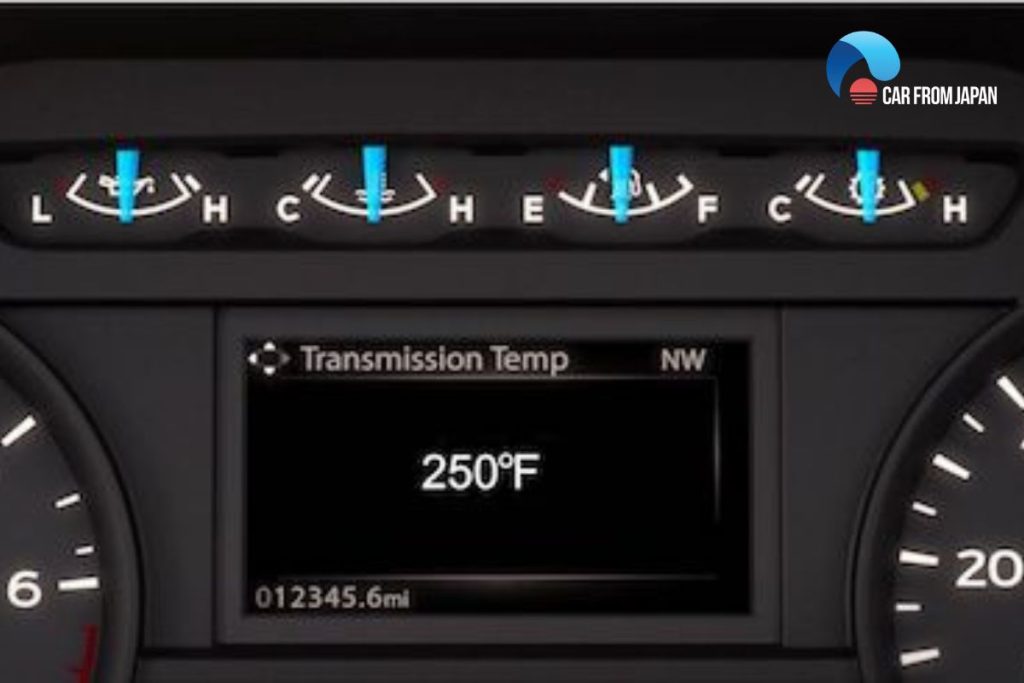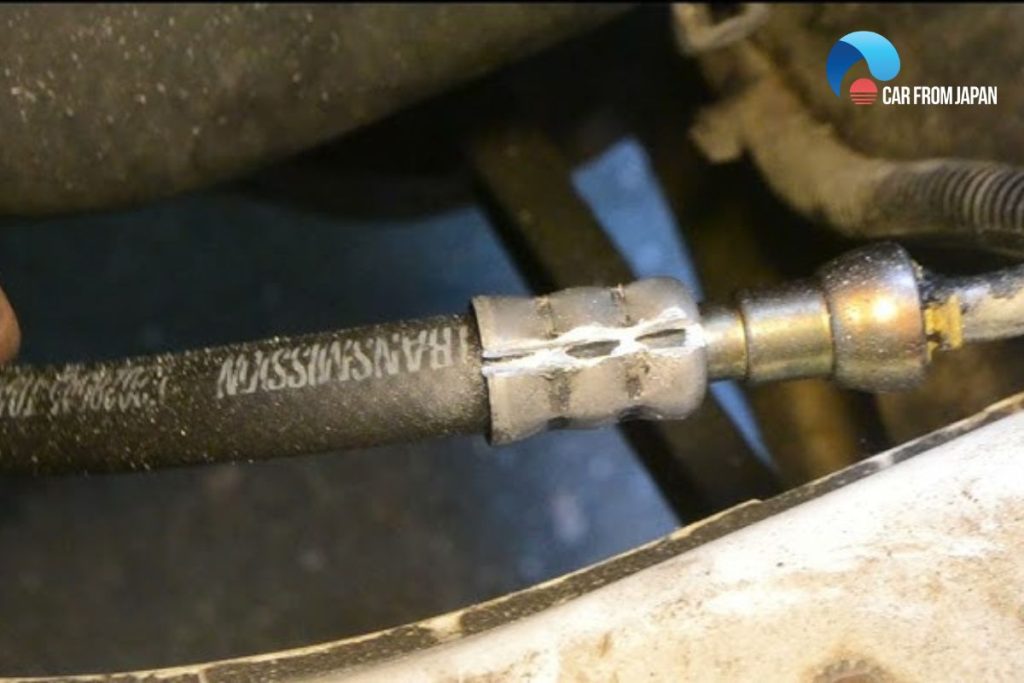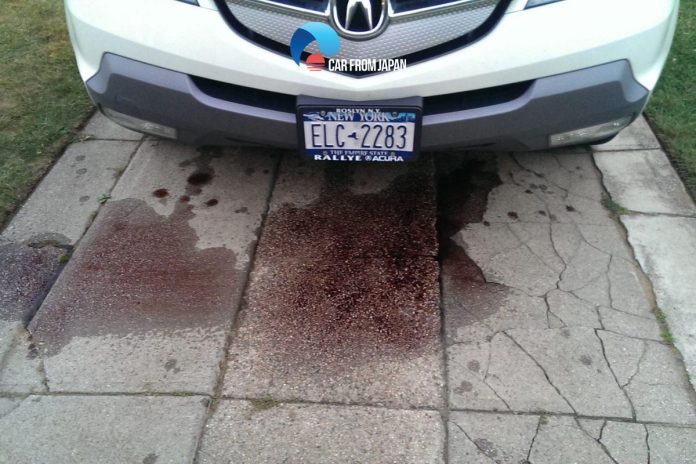The transmission coolant is an essential liquid that removes the excess heat from the transmission fluid. But the transmission cooling lines leaking can affect the performance of the entire transmission system.
Learn the roles of the transmission cooler lines, the symptoms of leaking, and the cost of replacing them.
Contents
- The Functions Of Transmission Cooler Lines
- Symptoms Of Transmission Cooling Lines Leaking
- What Is The Transmission Cooler Line Repair Cost?
- What To Do With The Transmission Cooling Lines Leaking?
- How To Prevent The Transmission Cooling Lines Leaking?
- FAQs on Transmission Cooling Lines Leaking
- Why do transmission line leaks often get misdiagnosed as engine oil leaks?
- Is it normal for transmission line fittings to leak only in cold weather?
- Why do aftermarket transmission coolers sometimes cause line leaks?
- Is it better to replace the entire cooling line or just patch the leak?
- Can transmission line leaks go unnoticed for a long time?
- Final Words
The Functions Of Transmission Cooler Lines
The cooler lines do two tasks:
- Carrying the transmission fluid to and from the transmission. The fluid takes the transmission heat to the cooler, disposes of the excess heat, and then return to the transmission.
- Transporting the fluid back and forth to an external or radiator-integrated cooler.
One end of these lines is attached to the transmission while the other end connects to the transmission cooler.
Symptoms Of Transmission Cooling Lines Leaking
There are symptoms that will make you aware of a leak in the cooling lines. You should not leave them in this state for a long time.
A leak means low-level of transmission fluid, which may lead to an overheated, damaged transmission.
Signs of visible damage
Checking under the hood is a part of regular car maintenance. During these inspections, check the cooler lines for any visible damage. If you find something, replace the defected line immediately.
Automatic transmission shifting hard
The transmission needs a minimum amount of fluid to be operative. A leak will cause a low fluid level which means the transmission will try harder to keep functioning.
As a result, there will be sharp shifting in its components. Slippage in the shifting is the next stage if you don’t treat the problem soon.
Overheated transmission
Transmission cooling lines leaking means either low-level of fluid or interrupted flow in the transmission.
In both cases, the result is an overheated transmission that may stop functioning if the condition persists.
Sometimes, it is difficult to spot the leak at the initial stage. With that, the question comes whether you can drive around with leaking cooling lines. Well, you can but should not.
The faulty lines can discharge a great amount of fluid pretty quickly, resulting in possible transmission failure.

Strange noises from the transmission
A leak in the transmission cooling lines can sometimes cause unusual noises to emanate from the transmission.
These noises can range from a whining or humming sound to a clunking or grinding noise, depending on the severity of the leak and the extent of the damage to the transmission.
Unusual transmission noises should never be ignored, as they can indicate a serious problem.
If you hear any strange noises coming from your transmission, head to a mechanic promptly.
Check engine light
While not directly related to the transmission, a leak in the transmission cooling lines can sometimes trigger the check engine light.
Because the computer system may detect irregularities in the transmission’s operation due to the low fluid level or overheating caused by the leak.
A check engine light lights up for many reasons, so you should determine the specific cause by effective methods such as reading diagnostic trouble codes (DTCs).
As a transmission cooling line leak can sometimes set DTCs related to transmission performance or temperature.
See More: Are Engine and Transmission Fluids Same?
What Is The Transmission Cooler Line Repair Cost?
The cooler lines are made of metal, rubber, or a combination of both. These materials can wear out or deteriorate under many circumstances.
Replacement is the only solution when they start leaking fluid. Sometimes, the transmission cooler may fail and the line replacement comes as a part of the repair.
The average replacement costs can be between $100 and $400. The final figure depends on the make and model of the car, prices of the parts, labor costs, and the taxes and fees in your state.
Remember that transmission cooler line repair cost is just a fraction of repairing or replacing a transmission.

What To Do With The Transmission Cooling Lines Leaking?
In general, you can perform several basic steps and top-off at home. But if you have solid knowledge on mechanics, you can opt for these step-by-step guide for a transmission cooling line leak inspection and check-up.
Safety first
If you notice signs of a transmission fluid leak, such as a puddle under your car or a burning smell, pull over to a safe location as soon as possible.
Continuing to drive with a leaking transmission can cause severe damage!
Confirm the leak
Carefully inspect the area around the transmission and the transmission cooling lines, which are typically located near the front of the engine.
Look for signs of red or pink fluid. Be cautious, as the transmission and surrounding components may be hot.
Check the fluid level
If it’s safe to do so, check the transmission fluid level using the dipstick. A low fluid level confirms a leak and indicates the severity of the problem.
Do not drive (Significant leak)
If the leak is substantial or the transmission fluid level is very low, do not drive the vehicle.
Driving with low transmission fluid can cause irreversible damage. Call a tow truck to transport your vehicle to a repair shop.
Temporary fix (Minor leaks)
If the leak appears to be minor and you need to drive a short distance to a repair shop, you can temporarily add transmission fluid to bring the level back to the safe range.
This is only a temporary solution and should not be relied upon for extended driving. Use the correct type of transmission fluid specified in your owner’s manual.
Professional inspection
Take your vehicle to a qualified mechanic as soon as possible. They have the expertise and tools to accurately diagnose the leak and determine the appropriate repair.
Repair options
Depending on the severity and location of the leak, the mechanic may recommend replacing the leaking cooling line(s), repairing a damaged fitting, or replacing a faulty transmission cooler.
In some cases, a simple tightening of a loose connection might be all that’s needed.
Fluid flush
If the leak has been present for a while, the mechanic may recommend a transmission fluid flush and filter change to remove any contaminants and ensure the system is filled with fresh, clean fluid.
Post-repair check
After the repair is complete, monitor the area for any signs of recurring leaks. Check the transmission fluid level regularly to ensure it remains within the proper range.

How To Prevent The Transmission Cooling Lines Leaking?
Inspect cooling lines regularly
Periodically inspect the transmission cooling lines for signs of wear, cracks, rust, or damage. Look for any loose connections or fittings.
If you notice any issues, have them addressed by a mechanic promptly. Catching problems early can prevent more significant leaks and costly repairs.
Use the correct transmission fluid
Always use the correct type of transmission fluid specified in your vehicle’s owner’s manual. Using the wrong fluid can damage seals and gaskets, increasing the risk of leaks.
When topping off or changing the fluid, double-check the specifications to ensure compatibility.
Avoid overheating the transmission
Excessive heat can damage transmission components, including seals and gaskets, making them more susceptible to leaks.
Avoid situations that can lead to transmission overheating, such as towing heavy loads beyond your vehicle’s capacity, driving in extremely hot weather for extended periods, or engaging in aggressive driving habits.
Flush the transmission system regularly
A transmission flush involves removing all the old fluid and replacing it with fresh fluid.
This act will remove built-up sludge, debris, and contaminants that can contribute to wear and tear on the transmission components, including the cooling lines.
Transmission service
Regular fluid and filter changes will help remove contaminants and ensure the system is operating with clean, properly functioning fluid.
Fresh fluid helps maintain the integrity of seals and gaskets, reducing the risk of leaks.

FAQs on Transmission Cooling Lines Leaking
Why do transmission line leaks often get misdiagnosed as engine oil leaks?
Because transmission fluid is also red/brown and often leaks near the oil pan area.
It can mix with dirt, making it hard to distinguish without proper inspection.
Is it normal for transmission line fittings to leak only in cold weather?
Yes. Rubber hoses and metal connections contract in cold temperatures, making existing weak seals more prone to leaking until the system warms up.
Why do aftermarket transmission coolers sometimes cause line leaks?
Improperly installed or mismatched fittings, weak hose clamps, or using rubber lines not rated for ATF pressure can lead to premature leaks.
Is it better to replace the entire cooling line or just patch the leak?
Temporary patches (like clamps or sealants) may hold briefly, but high ATF pressure and temperature cycles usually require full line replacement for a lasting fix.
Can transmission line leaks go unnoticed for a long time?
Yes. If the leak is slow and ATF lands on a hot surface, it may burn off without visible puddles. You may only notice when shifting becomes irregular.
Final Words
So here is everything you need to know about transmission cooling lines leaking and the average cost to fix this issue.
For more insightful Car maintenance tips, follow Car From Japan today!




2008 prius with 177000 miles, noticeable rapid shifting while climbing California mountain freeway at 60mph? Spark plugs and cylinder ignition coils recently replaced. Vehicle drives well within city traffic or flat highway conditions.
Mark Sorroe